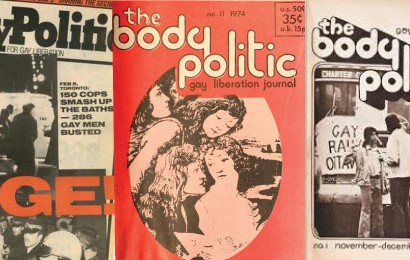Trying to establish a view of the history of feminist theatre in Canada can often become a numbers game, and with good reason. The Fraticelli Report on the Status of Women in Canadian Theatre, which came out in the 1980s, and the follow up study conducted by Rebecca Burton in association with the Playwright’s Guild of Canada in the early 200s, “Adding It Up,” serve as strong reminders of the necessity for encouraging, not just feminist, but female work on the Canadian stage. Looking at 1,156 productions across 104 theatres in the years between 1978 and 1981, Fraticelli found that women made up only 10% or produced playwrights, 13% or directors and 11% of artistic directors and these women were grouped largely in the theatres with the least funding (Fraticelli, 114). This report was met with what theatre scholar Ric Knowles describes as a “deafening silence,” while those who did comment on the report, such as the popular cultural magazine Saturday Night, quickly dismissed Fraticelli’s recommendations that cultural institutions actively engage in mentorship and seeking out female employees, on the grounds that it sounded to close to the “dangerous American concept” of affirmative action and “would inject non-artistic criteria into artistic judgements” (Fulford, 4).” None of the nationalistic outlets that so strongly supported overthrowing the myth of “pure quality” in order to encourage the production of more original Canadian plays seemed to see the irony of their resistance to the dreaded “affirmative action.”
Jump forward to the early 2000s, and the Ontario Arts Council is conducting own study of women in Canadian theatre which finds that women comprises 33% of playwrights, 28% of directors and 31% of artistic directors, prompting the Playwrights Guild to return to the topic in 2003, when the Women’s Caucus of the PGC, along with Nightwood Theatre, hosted a panel “Re-Opening the Fraticelli Report: Artistic directors and theatre professionals discuss the current status of women in 2003” at Buddies in Bad Times Theatre, where multiple panel members theorized that the imbalance was due to a kind of “post-feminist” reaction, with people believing that the problem had already been “taken care of” (Rusch-Drutz, 277). As for the continued lack of gender-based incentive funding, Pat Bradley pointed out that the ideology in theatre was “very much ‘we choose the best.’ The problem is that people of privilege often read material from their own location” (Rusch-Drutz, 279). The panel pointed at university curriculums and companies such as Soulpepper as specific offenders in this canon-creation (Rusch-Drutz, 297). It seems the argument about “pure quality” that Fraticelli was so frustrated with back in 1983 still holds weight.
The 2003 initiative came to a head in October 2006 with a report “Adding it Up: The Status of Women in Canadian Theatre,” a study done by Equity Theatre in Canada: Women’s Initiative in co-operation with Nightwood Theatre, the Playwrights Guild of Canada, and the Professional Association of Canadian Theatres The conclusion of the 2006 report states that “Clearly, sexist theatre practice is alive and well in the new century, as men still run the majority of ‘big business’ theatres, taking full advantage of a large portion of public funds” and that “the low numbers of female playwrights produced overall additionally attest to the fact that women’s creative work is still misguidedly viewed as inferior or risky, and this perception results in exclusion and under-representation, particularly in the mainstream” (Burton, 107).
Of course simply playing a numbers game to comment on feminist theatre in Canada overlooks some of the concrete progress that has been made since 1983. The founding of Alberta’s Hecate Players, Toronto’s Mean Feet and Theatre Asylum, as well as the playwright initiatives Write On Women’s Collective and the Scribbling Dames project can all be attributed, at least in part, to the galvanizing influence of the report. Then there is Nightwood, Canada’s longest running feminist thatre company. Though it was founded prior to the report (birthed out of the same working group as Buddies in Bad Times) Nightwood’s original mandate had more to do with poetry than feminism (another similarity with Buddies). It can be argued that Nightwood’s collective structure was inherently feminist, but it was only in later years that the company owned the label due, in part, to the realization that mentorship and a focus on women artists was needed to address the radical imbalance. Nightwood’s eventual focus on bringing female voices to the fore is validated in the success of some of the company’s pupils, such as playwrights Anne-Marie MacDonald, Monique Mojica, and Djanet Sears, all of whom received ongoing support, in the form of mentorship, staged readings, workshops, and productions, from the company (Rusch-Drutz, 201).
Of course, numbers alone cannot convey the diversity of the playwrights and companies that contribute to the status of feminist theatre in Canada. Beyond the notable names of past feminist theatre companies, many of them collectives, such as Redlight, Nellie McClung, Maenad Theatre, Le Theatre Experimental des Femes, Le Theatre Parminou, Urban Curvz, and Company of Sirens to name a few, there are the women-led projects being produced at theatres that may not necessarily have feminist mandates, but who do recognize the quality of the work. These works often hinge on telling women’s stories that may not otherwise receive mainstream attention (Anushree Roy’s look at sex slavery in Brothel Number Nine, produced at Theatre Passe Muraille) or on the re-claiming or re-working of a lost women’s history (Evalyn Parry’s Spin produced at Buddies in Bad Times or even In the Next Room: The Vibrator Play, produced at Tarragon). Even a list of notable Canadian feminist playwrights such as Sharon Pollock, Linda Griffiths, Djanet Sears, d’bi Young, Trey Anthony, etc. will inevitably leave someone out, completely overlooking all the low-budget/no-budget work that goes on at the summer festivals, and would, of course, be entirely too focused on text-based theatre, especially when one considers that some of Canada’s most famous feminist works (I’m thinking here of This is for You, Anna and Goodnight Desdemona, Good Morning Juliet) are, at least in part, products of collective creation.
It seems, however, that conversations about the bare numbers are still necessary, as the imbalance is too large to go unremarked upon. On that note, the Playwright’s Guild’s Equity in Theatre initiative will be holding a public symposium at the Theatre Centre on April 27th to discuss strategies for addressing inequities in contemporary Canadian theatre. It should provide a productive opportunity to bring more people into the discussion.
Works Cited:
Burton, Rebecca. “Adding It Up: The Status of Women in Canadian Theatre.” (2006).
Farfan, Penny and Ferri, Lesley. “Theatre’s ‘Dirty Secret’.” Theatre Journal. 62. 4 (2010): 1-4. Print.
Fraticelli, Rina. “The Invisibility Factor: A Report on the Status of Women in Canadian Theatre.” Fuse. September 1982: 112-124. Print.
Fulford, Robert. “Notebook.” Saturday Night. February 1983: 3-11. Print.
Knowles, Ric. “Just the High Points? A Canadian Theatre Chronology.” Theatre Memoirs. Toronto: PUC, 1998. 74-89.
Lushington, Kate. “Fear of Feminism.” Feminist Theatre and Performance. Ed. Susan Bennett. Toronto: Playwrights Canada Press, 2006. 11-17. Print.
Rusch-Drutz, Corinne. Interviewing the Mothers of Invention: A Qualitative Analysis of Women Theatre Practitioners in Toronto. University of Toronto, 2004.
Related posts

Everything you Wanted to Know about Gertrude Stein but were too Afraid to Ask



